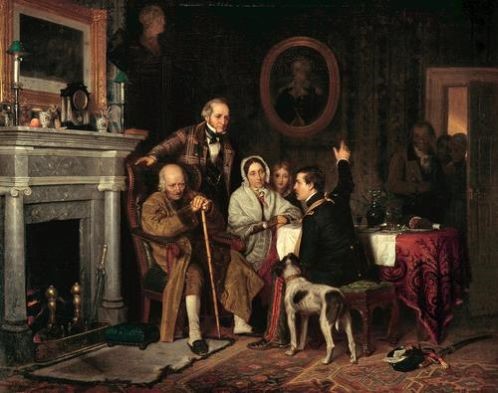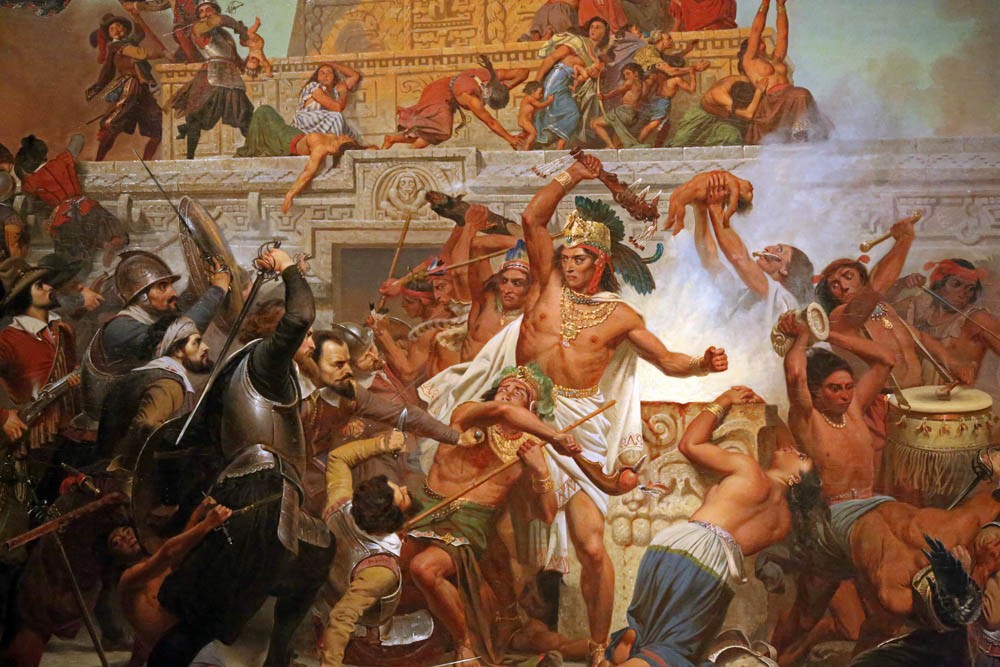 All papers examples
All papers examples
Disciplines

- MLA
- APA
- Master's
- Undergraduate
- High School
- PhD
- Harvard
- Biology
- Art
- Drama
- Movies
- Theatre
- Painting
- Music
- Architecture
- Dance
- Design
- History
- American History
- Asian History
- Literature
- Antique Literature
- American Literature
- Asian Literature
- Classic English Literature
- World Literature
- Creative Writing
- English
- Linguistics
- Law
- Criminal Justice
- Legal Issues
- Ethics
- Philosophy
- Religion
- Theology
- Anthropology
- Archaeology
- Economics
- Tourism
- Political Science
- World Affairs
- Psychology
- Sociology
- African-American Studies
- East European Studies
- Latin-American Studies
- Native-American Studies
- West European Studies
- Family and Consumer Science
- Social Issues
- Women and Gender Studies
- Social Work
- Natural Sciences
- Anatomy
- Zoology
- Ecology
- Chemistry
- Pharmacology
- Earth science
- Geography
- Geology
- Astronomy
- Physics
- Agriculture
- Agricultural Studies
- Computer Science
- Internet
- IT Management
- Web Design
- Mathematics
- Business
- Accounting
- Finance
- Investments
- Logistics
- Trade
- Management
- Marketing
- Engineering and Technology
- Engineering
- Technology
- Aeronautics
- Aviation
- Medicine and Health
- Alternative Medicine
- Healthcare
- Nursing
- Nutrition
- Communications and Media
- Advertising
- Communication Strategies
- Journalism
- Public Relations
- Education
- Educational Theories
- Pedagogy
- Teacher's Career
- Statistics
- Chicago/Turabian
- Nature
- Company Analysis
- Sport
- Paintings
- E-commerce
- Holocaust
- Education Theories
- Fashion
- Shakespeare
- Canadian Studies
- Science
- Food Safety
- Relation of Global Warming and Extreme Weather Condition
Paper Types

- Movie Review
- Essay
- Admission Essay
- Annotated Bibliography
- Application Essay
- Article Critique
- Article Review
- Article Writing
- Assessment
- Book Review
- Business Plan
- Business Proposal
- Capstone Project
- Case Study
- Coursework
- Cover Letter
- Creative Essay
- Dissertation
- Dissertation - Abstract
- Dissertation - Conclusion
- Dissertation - Discussion
- Dissertation - Hypothesis
- Dissertation - Introduction
- Dissertation - Literature
- Dissertation - Methodology
- Dissertation - Results
- GCSE Coursework
- Grant Proposal
- Admission Essay
- Annotated Bibliography
- Application Essay
- Article
- Article Critique
- Article Review
- Article Writing
- Assessment
- Book Review
- Business Plan
- Business Proposal
- Capstone Project
- Case Study
- Coursework
- Cover Letter
- Creative Essay
- Dissertation
- Dissertation - Abstract
- Dissertation - Conclusion
- Dissertation - Discussion
- Dissertation - Hypothesis
- Dissertation - Introduction
- Dissertation - Literature
- Dissertation - Methodology
- Dissertation - Results
- Essay
- GCSE Coursework
- Grant Proposal
- Interview
- Lab Report
- Literature Review
- Marketing Plan
- Math Problem
- Movie Analysis
- Movie Review
- Multiple Choice Quiz
- Online Quiz
- Outline
- Personal Statement
- Poem
- Power Point Presentation
- Power Point Presentation With Speaker Notes
- Questionnaire
- Quiz
- Reaction Paper
- Research Paper
- Research Proposal
- Resume
- Speech
- Statistics problem
- SWOT analysis
- Term Paper
- Thesis Paper
- Accounting
- Advertising
- Aeronautics
- African-American Studies
- Agricultural Studies
- Agriculture
- Alternative Medicine
- American History
- American Literature
- Anatomy
- Anthropology
- Antique Literature
- APA
- Archaeology
- Architecture
- Art
- Asian History
- Asian Literature
- Astronomy
- Aviation
- Biology
- Business
- Canadian Studies
- Chemistry
- Chicago/Turabian
- Classic English Literature
- Communication Strategies
- Communications and Media
- Company Analysis
- Computer Science
- Creative Writing
- Criminal Justice
- Dance
- Design
- Drama
- E-commerce
- Earth science
- East European Studies
- Ecology
- Economics
- Education
- Education Theories
- Educational Theories
- Engineering
- Engineering and Technology
- English
- Ethics
- Family and Consumer Science
- Fashion
- Finance
- Food Safety
- Geography
- Geology
- Harvard
- Healthcare
- High School
- History
- Holocaust
- Internet
- Investments
- IT Management
- Journalism
- Latin-American Studies
- Law
- Legal Issues
- Linguistics
- Literature
- Logistics
- Management
- Marketing
- Master's
- Mathematics
- Medicine and Health
- MLA
- Movies
- Music
- Native-American Studies
- Natural Sciences
- Nature
- Nursing
- Nutrition
- Painting
- Paintings
- Pedagogy
- Pharmacology
- PhD
- Philosophy
- Physics
- Political Science
- Psychology
- Public Relations
- Relation of Global Warming and Extreme Weather Condition
- Religion
- Science
- Shakespeare
- Social Issues
- Social Work
- Sociology
- Sport
- Statistics
- Teacher's Career
- Technology
- Theatre
- Theology
- Tourism
- Trade
- Undergraduate
- Web Design
- West European Studies
- Women and Gender Studies
- World Affairs
- World Literature
- Zoology
History Paintings, Coursework Example
Hire a Writer for Custom Coursework
Use 10% Off Discount: "custom10" in 1 Click 👇
You are free to use it as an inspiration or a source for your own work.

If there is an expectation the mid-19th century American art is typically patriotic or only pastoral, two notable works shatter any such conception. What is seen, in fact, is that art in this era very much does what art in any era seeks to do: it challenges convention and presents new interpretations of important events. Then, the artists in question have dimensions themselves, and are not bound to any set ideas regarding intent. In examining the American art of this era, in fact, there is a profound reminder that history always first exists as a living epoch, and is subject to all the conflicts that mark any period of time in a nation’s evolution.
Interestingly, Richard Caton Woodville and Emanual Leutze both employ other historical periods to emphasize their ideas regarding current situations, and the technique is all the more dramatic when a painting of each, done at virtually the same time, is examined. The device of using history was certainly popular: “History painting was the most valued category of painting, followed by landscapes, portraits, and genre paintings, respectively” (Online Lecture). It would be the artists’ choices, however, that would make all the difference. Woodville’s Old ’76 and Young ’48 clearly illustrates how history, infused into a modern scenario, adds great depth. Woodville was American born but, like many artists of the era, did most of his work in Europe (online lecture). It may be argued that this gave him and his peers a necessary perspective, as the painting represents a kind of ambiguity not likely to be encouraged on native American soil, and when the nation is at war. On one level, the painting is easily understood. Two wars of different eras are contrasted within a single family, as the elderly Revolution veteran takes in the excited talk of the young soldier – presumably a grandson – of the Mexican war (Pohl 188).

Old ’76 and Young ’48
Richard Caton Woodville, 1849, oil on canvas
The Walters Art Museum, Baltimore, Maryland
It has been noted that Woodville, painting in Europe at this time, reveals deep knowledge of the circumstances of the Mexican war. Soldier straps indicated rank and stripes on trousers indicated regiment in this war, and Woodville altered these details in the course of the painting (art.thewalters.org). It is the over-all duality of the painting, however, that challenges the viewer. On one level, affirmations of American independence and spirit are everywhere, from ther intimacy of the fireside to the print of the signing of the Declaration of Independence. The glass on the print, however, has a crack, and this exemplifies the painting’s conflict. The portrait of the old man when he was young, pointed to by the soldier, adds particular meaning to the complex scenario (Pohl 188). It is the old man from his own youthful, fighting days, and the contrast sends a strong message. The old man seems weary and perhaps uncertain, and Woodville is asking that all wars be seen in the light of those of the past. In a way perhaps not all that subtle, the artist is begging the question: is it only the spirit of the age that validates war?
The Storming of the Teocalli by Cortez and His Troops

Emanuel Leutze, 1848, oil on canvas
Wadsworth Atheneum, Hartford, CT
With Emanuel Leutze’s The Storming of the Teocalli by Cortez and His Troops of 1848, a similar inquiry is posed, if in more dramatic terms. Reversing the American pattern of emigration of Woodville and his peers, Leutze was an immigrant from Germany (csub.edu). Nonetheless, it may be surmised that the Eurpean influences here, as with the other artists of the day, broadened the artistic field of inquiry. Most strikingly with Leutze, this could take a wide range of forms. Few paintings are as much icons of patriotism than his Washington Crossing the Delaware, yet the work seen above is a radically different vision of war. As the timing of the painting coincides with the Mexican conflict, it very much seems that a direct point is being made. As with the inaccuracies famously noted in the Washington work, Leutze drew heavily on both Mayan and Aztec lithographs and images before painting his vision of Teocalli, clearly unconcerned with how the cultures were separated by time, distance, and ideology (csub.edu). What matters is that one culture is savagely attacking another, and the implication is that the Catholic – and mercenary – interests of the Spanish invaders are not removed from American ideas of intervening in Mexico. The painting is virtually melodramatic, reflecting the heightened emotion and physicality of classic style, which emphasizes the essential point.
What is ultimately revealed here is unexpected discontent, or at least ambiguity, and it is revealed in the vastly different Woodville and Leutze paintings. One is sedate and domestic, presenting an intimate family scenario; the other is an explosion of battle and clashing forces, with striking differences evident between the opposing parties. Both, nonetheless, offer distinctly wary views of war, and comment upon that war then occupying America. With Woodville, there is a more philosophical query as to the worth of the endless cycle of conflict itself. With Leutze, there is a pronounced statement being made on the overt defying of another culture, and particularly a Latin American one. Both Woodville and Leutze, then, offer specifically American art that challenges to dominant ideals and efforts of the nation at that time.
Works Cited
Art: The Walters Museum. “Old ’76 and Young ’48.” N/A, Web. <http://art.thewalters.org/detail/33726/old-76-and-young-48/>
California State University at Bakersfield (csub.edu). “’The Storming of the Teocalli’ (1848). Emmanuel Leutze.” N/A, Web. <http://www.csub.edu/~gsantos/img0014.html?
Online Lecture. Week 2. 2012, Web.
Pohl, F. K. Framing America: A Social History of American Art, 2nd Ed. New York: Thames & Hudson, 2007. Print.

Stuck with your Coursework?
Get in touch with one of our experts for instant help!

Time is precious
don’t waste it!
writing help!


Plagiarism-free
guarantee

Privacy
guarantee

Secure
checkout

Money back
guarantee

